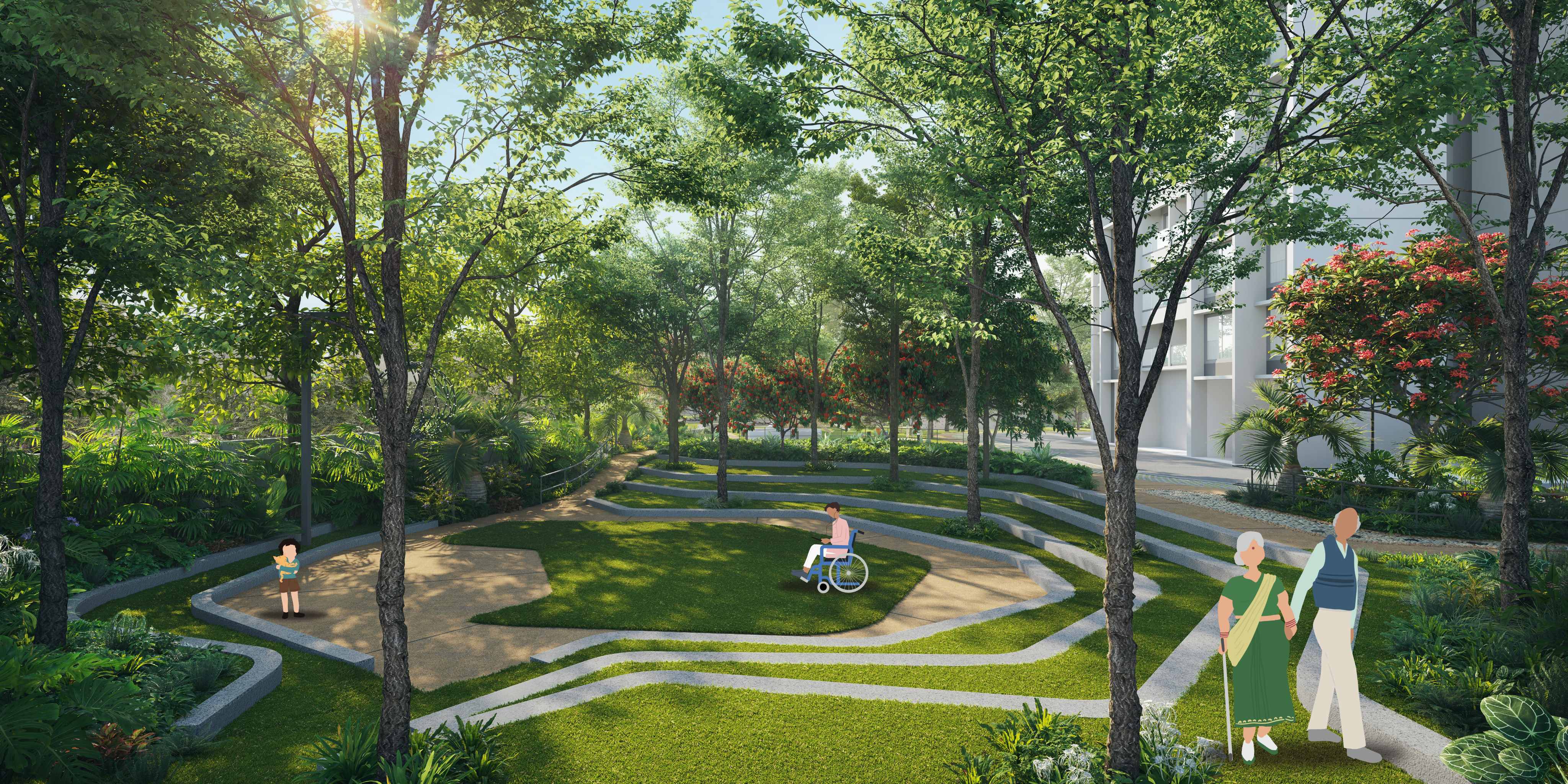In the traditional real estate marketplace, most digital renders of design projects in architecture are embedded with human figures representing White, able-bodied people – and that’s as true for India as elsewhere. Meghna Mehta and team at Godrej Properties Limited (GPL) decided otherwise for their studios’ projects. The design renders for their upcoming project launches now feature people with disability, queer couples, pregnant people, and older adults, all depicted in varying skin tones and colourful attire, representing people who are - and historically have been - explicitly excluded from or not represented in design renders in mainstream architecture.
Meghna is a design manager at the GPL Design Studio’s head office at Godrej One, Mumbai. She leads the design renders for marketing launches of architecture projects produced by GPL’s design studios across India. She initiated the “Inclusivity Matters” framework for design and marketing renders emerging from GPL because she felt the need for this work to embody their commitment to diversity, equity, and inclusion ideologies. The framework is oriented towards representing people with disability and queer folx from within the Indian context in GPL’s design renders. It resonates in the team's attention to this small but significant detail in their work.
The inspiration for this change is connected to Meghna’s own past as an architectural journalist. Meghna recalls, “One day while randomly skimming through my work that I did as a journalist, I came across this article that I had written which extensively discusses Francesca Perani’s brilliant project “cutoutmix” through which she created an open access collection of several two-dimensional, non-heteronormative human figures for architectural renders, and I thought to myself that my reflections about the importance of her work must be put to use now in the work I do at GPL.”
Relationally, Meghna with her in-house team began developing a set of non-universalising figures in late 2024 exclusively for their design studios’ architectural renders. Their recent work includes these figures, and they are striving to continue this practice in their forthcoming projects.
It is particularly important to Meghna and her team at GPL that these renders defy representing people with disability as props. Examples of GPL’s illustrations of barrier-free environments include renditions of smooth, even pavements in parks, ensuring accessibility to someone who might use crutches, and tracings of paths in amphitheatre-esque outdoor seating areas seamlessly lead to ramps, ensuring accessibility to folx who use wheelchairs. Focusing on anti-ableist design productions, Meghna reiterates, “The design teams at GPL have been committed to centering accessibility right from the inception of every project, and across all stages of planning and development including the designing of our marketing offices and accessible environments in our projects.” This stands in opposition to the common practice of making accessible design values as add-on elements when projects are ready to conclude.


Design renders from GPL’s marketing collaterals that have been launched so far.
Source: Meghna Mehta
“We take notes from the Beyond Barriers framework which we published in-house as a follow-through after Professor Gaurav Raheja (Laboratory of Inclusive Design, IIT Roorkee) conducted a workshop at ThinkPodx for all teams at GPL Design Studio. The guidebook describes accessible design frameworks and universal design principles in combination with best practices.” Meghna added. The book travels tables across their studio, she remarked.
GPL’s architectural design practices centre the personhood and needs of folx with disability, spanning the spectrum of physical, visual, auditory, and cognitive disabilities, and these renders are demonstrative of the studios’ commitment. Through the “Inclusivity Matters” project, GPL’s design studios intend to illuminate their responsibility and attentiveness towards DEI efforts at Godrej. Meghna and her team have been championing this purpose one render at a time.
Text by Gayatri Shanbhag. Gayatri is a maker, writer, researcher, and educator interested in anti-colonial queer feminist design studies and pedagogy, and history.